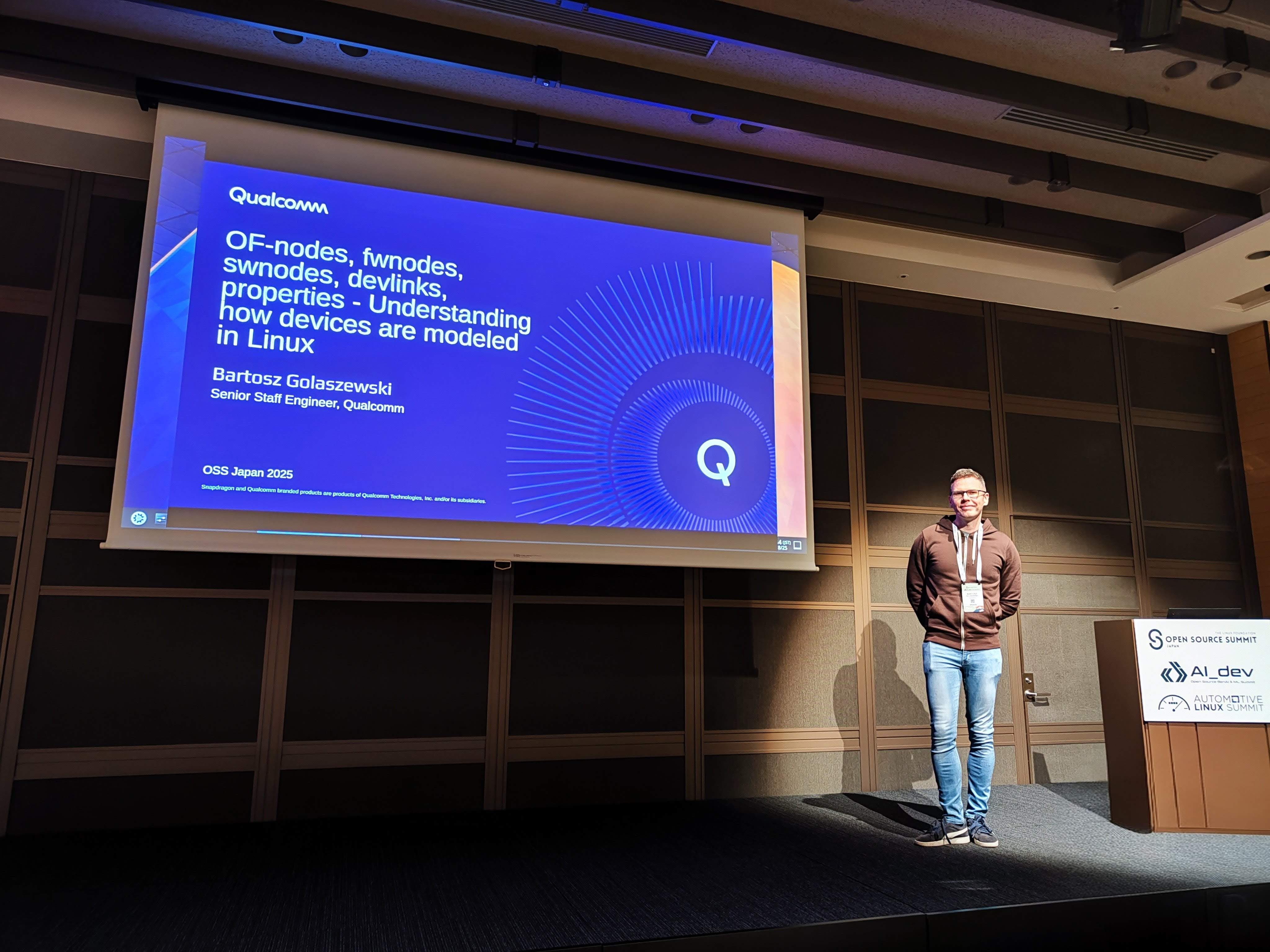Posts
267Following
39Followers
287#standwithukraine 🇵🇱 🇪🇺 🇺🇦 🇨🇭
IRC: krzk
Kernel work related account. Other accounts of mine: @krzk@mastodon.social
Krzysztof Kozlowski
krzkhttps://youtu.be/mF3MQYH3x3s?si=vXBEm8EZIRUohhg3
Krzysztof Kozlowski
krzkKrzysztof Kozlowski
krzkhttps://web.git.kernel.org/pub/scm/linux/kernel/git/soc/soc.git/commit/?h=arm/fixes&id=a3b80161fbd06b5dbc0af8f29f8ae58c4aebf0b2
Krzysztof Kozlowski
krzkThat's how you don't waste time of the audience during your speech. :)
Tokyo was cool, that was my third visit to Japan and second trip to Tokyo. But beside the city, time spent for Linux Plumbers Conference is as usual priceless. See you next year in Prague!
https://youtu.be/AN_3EA7gv04?si=1eBljSyw57zuzcNt&t=5
Krzysztof Kozlowski
krzkKrzysztof Kozlowski
krzkIt seems I will need to keep repeating this talk :)
https://sched.co/29Foi
Krzysztof Kozlowski
krzkhttps://sched.co/29Foi
I will also have a shortened version at the Linux Plumbers Conference, just a few days after.
#OSSummit #OSSJapan2025 #LinuxPlumbers
Anne Applebaum
anneapplebaum@journa.hostThis is not a peace plan. It is a proposal that weakens Ukraine and divides America from Europe, preparing the way for a larger war in the future. In the meantime, it benefits unnamed Russian and American investors, at the expense of everyone else.
https://www.theatlantic.com/ideas/2025/11/trumps-war-peace/685024/?gift=hVZeG3M9DnxL4CekrWGK3x5H8-x30wTOq6lDtv0xjW4&utm_source=copy-link&utm_medium=social&utm_campaign=share
Krzysztof Kozlowski
krzk$ git describe
v6.18-rc3
$ git shortlog -s -n --no-merges
Oh! 5th place!
Don’t stop me now
I’m having such a good time
I’m having a ball
Don’t stop me now
Krzysztof Kozlowski
krzkhttps://git.kernel.org/pub/scm/linux/kernel/git/torvalds/linux.git/commit/?id=b2a578f3127ab9ef80114cef9b20a2b42a8ee77a
Arnd, previously the sole SoC maintainer, handled pull requests and patches from several other sub-maintainers for each SoC sub-architecture (e.g. Qualcomm, NXP) and other driver trees. The SoC tree was one of the busiest, if not the busiest, trees in kernel - visible on @lwn.net graph: https://lwn.net/Articles/981742/
With this change the load will hopefully spread.
Thorsten Leemhuis (acct. 1/4)
kernellogger@hachyderm.ioTWIMC, the "Linus opposes Link: tags with links to the patch submission" is saga over, as Linus wrote:
""[…] I do think that at least if people use the different domain, I won't complain.
I'm still not convinced it's a great idea, but at least it means that the "this is the source of the commit" is clearly separate from the "this is actual background". […]""
Kristian Kiehling
Kristian_Kiehling@mastodon.socialNot only did a permanent member of the UN security council attack a clearly marked UN humanitarian convoy with FPV Drones, they also proceed to proudly share the footage of their appalling crime on the internet.
Krzysztof Kozlowski
krzkNow some maintainers PREFER 100. I don't know your case here - ask maintainer of that code, which might be that person nitpicking you :)



